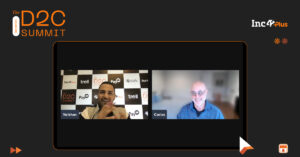
As an investor and a recent product manager, I have encountered many companies that failed and some that succeeded at their product-led growth (PLG) efforts.
The PLG journey is never easy, but it can be a powerful path to enduring success.
I have distilled my experience into a short but essential list of prerequisites that I believe will significantly increase the chances of success at your startup.
Build (or rebuild) to enable a self-serve experience
One pervasive approach to embarking on a PLG journey is to create a sign-up page and make the whole product available for self-serve consumption. Maybe there is a snazzy marketing campaign to go with it.
Now, unless the product is so simple that the user can, on their own, get to an a-ha! moment in a matter of minutes, I have never seen this approach work — ever.
In a PLG setting, there is no live human being who can set the stage or hand-hold the customer through the product. If the home page doesn’t make sense in a few seconds and the product doesn’t work in a few minutes, the customer will summarily dismiss everything the startup offers.
Think in bite-sized experiences, each of which would be a meaningful outcome for the customer.
Optimizing time-to-value requires figuring out the smallest, atomic, self-contained units of value that you can package into a self-serve offering. It has the benefit of not overwhelming the potential customer and delivering incremental value while keeping them hooked.
Some founders argue that their products are too complicated to lend to PLG. Instead of completely giving up on self-serve, how about designing an experience that showcases the essence of the product with complexity pre-packaged or sandboxed? For example, depending upon the use case, this might mean an offering that works in a multicloud, pre-configured setup or runs on multiple virtual endpoints.
Self-serve doesn’t have to mean that the entire product works in the customer’s own desired setup. Think in bite-sized experiences, each of which would be a meaningful outcome for the customer.
Instrument, measure and manage customer touch points
Product-led growth can be notoriously difficult to troubleshoot because of the inherent low-touch nature of this go-to-market approach.
Consider a scenario where conversion to a paid product is low. Is it because you’re giving away too much of the product for free? Are the benefits of the paid product not clearly articulated? Is it because you are targeting a customer segment with no budget? Is the pricing too high (or low)?
To determine what the issue(s) is — product packaging, positioning, pricing, market segmentation or some combination — you need data to inform the troubleshooting process. This is why I’d highly recommend carefully instrumenting various customer touch points (including, but not limited to, product usage) even before rolling out a self-serve product.


![Read more about the article [Funding alert] UpScalio raises $15M led by Gulf Islamic Investments](https://blog.digitalsevaa.com/wp-content/uploads/2021/12/CopyofImageTagsEditorialTeamMaster1-1639490904586-300x150.jpg)






